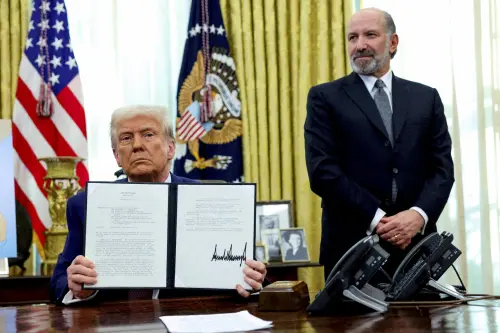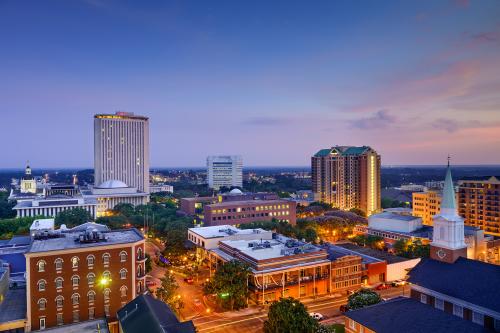Placemaking Postcards is a blog series from the Bass Center for Transformative Placemaking at Brookings where policymakers and practitioners guest-author promising placemaking efforts from across the U.S. and abroad that foster connected, vibrant, and inclusive communities. In line with the principle tenets of placemaking, the goal of the series is to recognize the community as the expert, highlight voices from the field, and to create a community of learning and practice around transformative placemaking.
Like many cities, Washington, D.C. often takes a siloed approach to community development. While there are countless community-based organizations, place governance entities, and city agencies doing tremendous work in fields such as economic development, social services, housing, and education, these actors rarely work together to assess where community strengths lie, where stakeholder connections may be missing, or where service gaps exist. This fractured approach can hamper neighborhood progress and result in cascading consequences for residents and small businesses.
Using the case study of a declining public space in the heart of one of the District’s most vibrant neighborhoods, this piece examines the far-reaching consequences that community development siloes have on neighborhoods and introduces an actionable model for strengthening hyperlocal governance ecosystems through a more integrated approach. It shows how cities—by investing in hyperlocal governance—can tackle some of their most pressing challenges.
What happens when city agencies and organizations don’t talk to one another
In an environmental ecosystem, the absence or introduction of a single organism or element can devastate the entire system. This reality also holds true in neighborhood development, but may be less apparent. By applying an ecosystem approach to community development, we can start to understand how to solve many systemic challenges facing neighborhoods.
Take the case of Washington, D.C.’s Columbia Heights Civic Plaza: a public space in the heart of Columbia Heights, one of the city’s most diverse neighborhoods by race, age, socioeconomic status, and cultural identification. Civic Plaza was built in 2008 during a major redevelopment of Columbia Heights’ commercial district, with the vision of it being an activated, vibrant space for residents to socialize, play, and build community.
That vision soon fell apart due to ownership and responsibility issues. While the plaza itself is a fairly small public space, there are many different stakeholders and agencies with responsibility or ownership for parts of the space. For instance, the District’s Department of Transportation controls the sidewalks, but because the public realm design utilizes a special paver stone that only the Department of General Services (DGS) has access to, neither agency appeared to have clear responsibility for making repairs when needed. The plaza’s splash pad was meant to be physically maintained by DGS, but it was also part of the Department of Parks and Recreation’s (DPR) portfolio—meaning that if the fountain was turned on or off at the wrong time, DPR was supposed to address the issue, but if it was malfunctioning, it was DGS’ responsibility.
Because there was no clear citywide plan for how stakeholders would resolve such issues, the plaza fell into a significant state of disrepair, with challenges ranging from dangerous sidewalks to malfunctioning fountain sprockets shooting water onto the surrounding area. This lack of care for the space had ramifications for the community. The plaza where kids and families used to play became underutilized and occupied by individuals struggling with substance use disorders. The state of the plaza contributed to a decrease in revenue for nearby small businesses and subsequent business turnover, resulting in several long-term storefront vacancies. These issues further diminished the public’s perception of the space, turning this once idealized plaza into a neighborhood “problem”—and a clear example of an ecosystem out of balance.

Working toward a balanced ecosystem
By 2021, Civic Plaza reached a point of disrepair that became intolerable for many in the community. Residents and business owners approached my organization, District Bridges, to see if there was anything we could do. We applied for a grant with the National Association of City Transportation Officials (NACTO) to pilot a “Community Development Ecosystem” approach to repairing Civic Plaza. We define this approach as a comprehensive method for understanding and organizing the people, systems, and spaces—both good and bad—that impact the success of a neighborhood.
From the lessons learned during the six-month pilot, we codified three key steps in a Community Development Ecosystem approach that can be adapted to any neighborhood or city context:
- Develop a shared vision across agencies and actors. Many neighborhoods already have active citizens associations, business associations, arts and humanities organizations, and residents committed to supporting their communities. The first step in building a stronger ecosystem is engaging these community stakeholders to co-create a shared vision for neighborhood development. In Columbia Heights, this shared vision was to create a safe and welcoming environment at Civic Plaza. To align trust and values among the stakeholders, we convened monthly and eventually agreed to prioritize the plaza’s maintenance and repair first before moving on to more holistic interventions.
- Create a community ecosystem map. After establishing a shared vision, the next step is to assess the state of a neighborhood’s development ecosystem and pathways to improving it. In the case of Columbia Heights, we used a seven-element community assessment that relied on surveys, interviews, focus groups, and visioning sessions to map the ecosystem of people, spaces, and systems influencing the neighborhood and determine which interventions could improve the ecosystem’s function. While we had agreed to prioritize management of the space first, our community ecosystem map made it clear that we had to simultaneously direct outreach to the vulnerable individuals who frequented the plaza. Unlike the challenge of maintenance, this task was more complex and required acknowledging the layers of trauma and systemic hardship these individuals faced. But by mapping their barriers and pathways to care, we were able to outline key interventions to address gaps in social service provision, from assisting individuals in accessing documents (like driver’s licenses and Taxpayer Identification Numbers) to employing them through a new Plaza Stewardship Program.
- Ensure sustainability. Collaborative partnerships and coalitions often break down because they lack a strategy for long-term sustainability. To ensure this doesn’t happen, a Community Development Ecosystem approach must craft a plan from the outset to determine how existing funding will be managed, how new funding will be pursued through a coalition model, how funding gaps will be addressed, how credit and acknowledgement will be shared, how disputes will be resolved, and how the work will be collectively communicated. Initiating collaborative governance requires a lot of time and conversation upfront, but as organizational roles are solidified, sustainability eventually requires less time and attention because the partners understand their responsibilities. The key to sustainability for collaborative governance is continuous commitment, assessment, and adaptation to the environment. In Columbia Heights, this is still an emerging practice that we are actively working through with city government partners.
Of course, Columbia Heights is a large neighborhood with many complex challenges that extend far beyond Civic Plaza. But by limiting the scope of this pilot to focus on Civic Plaza—a public space emblematic of many broader system breakdowns—we were able to establish a culture of collaboration across siloes to address a range of issues impacting the community.

Strengthening hyperlocal governance across Washington, D.C.
In fiscal year 2022, District Bridges received additional funding from the city’s Department of Small and Local Business Development to continue the community development ecosystem approach in Civic Plaza. In this first full year since receiving this funding, we have been able to achieve multiple successes, including: developing a service provider working group for those experiencing homelessness and/or substance abuse concerns, employing unsheltered people as stewards of the space, developing a community-based safety plan through a partnership with the DC Peace Team, and hosting hundreds of community events.
We are now looking to expand these successes to a broader approach that can eventually be replicated in all eight wards of the District. As we look to scale and replicate, it’s important to remember what made this program successful to begin with: remaining focused on nurturing relationships between agencies, systems, and siloes through the lens of place.
The Brookings Institution is committed to quality, independence, and impact.
We are supported by a diverse array of funders. In line with our values and policies, each Brookings publication represents the sole views of its author(s).





Commentary
How hyperlocal governance is helping restore a troubled Washington, D.C. public space
December 20, 2022